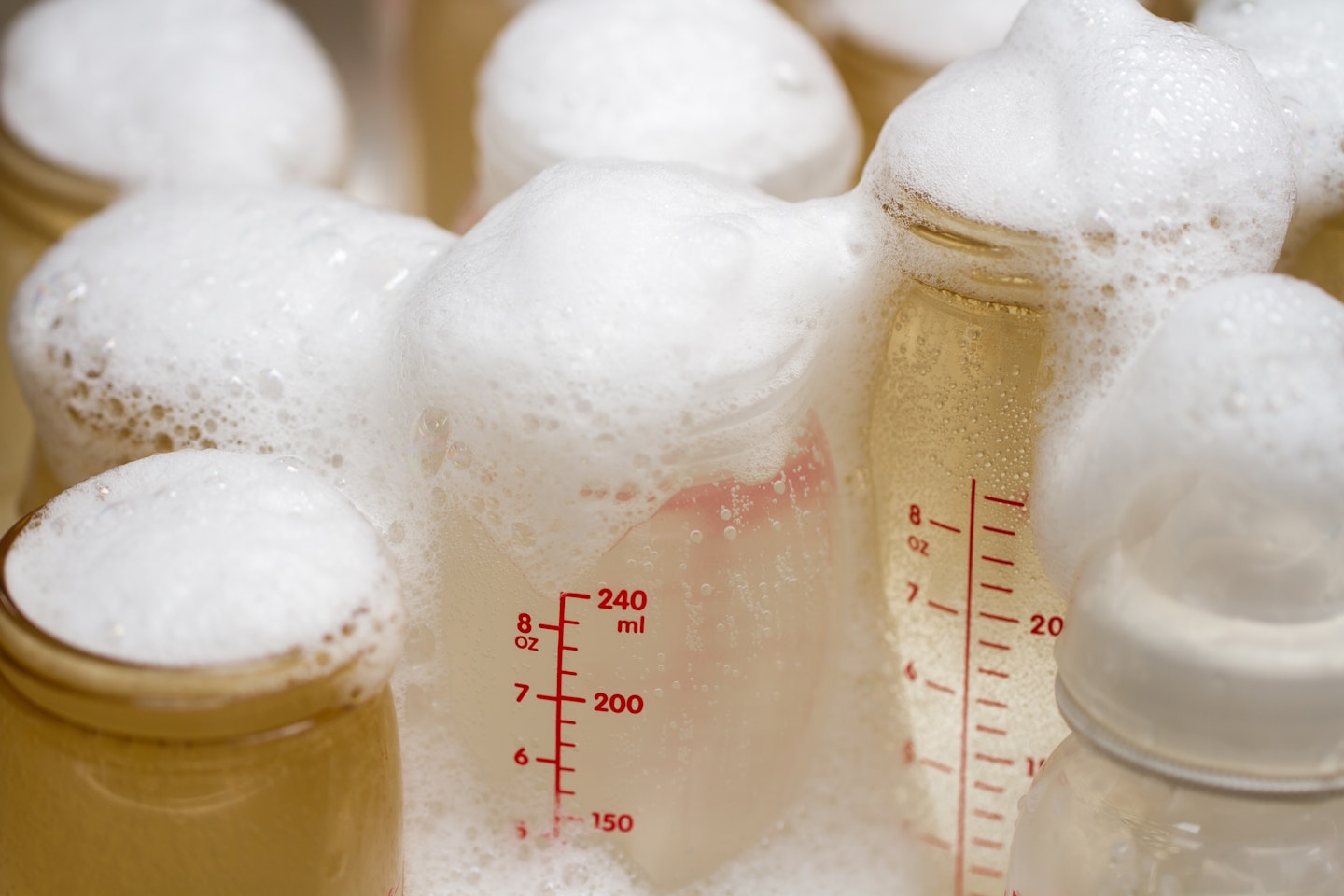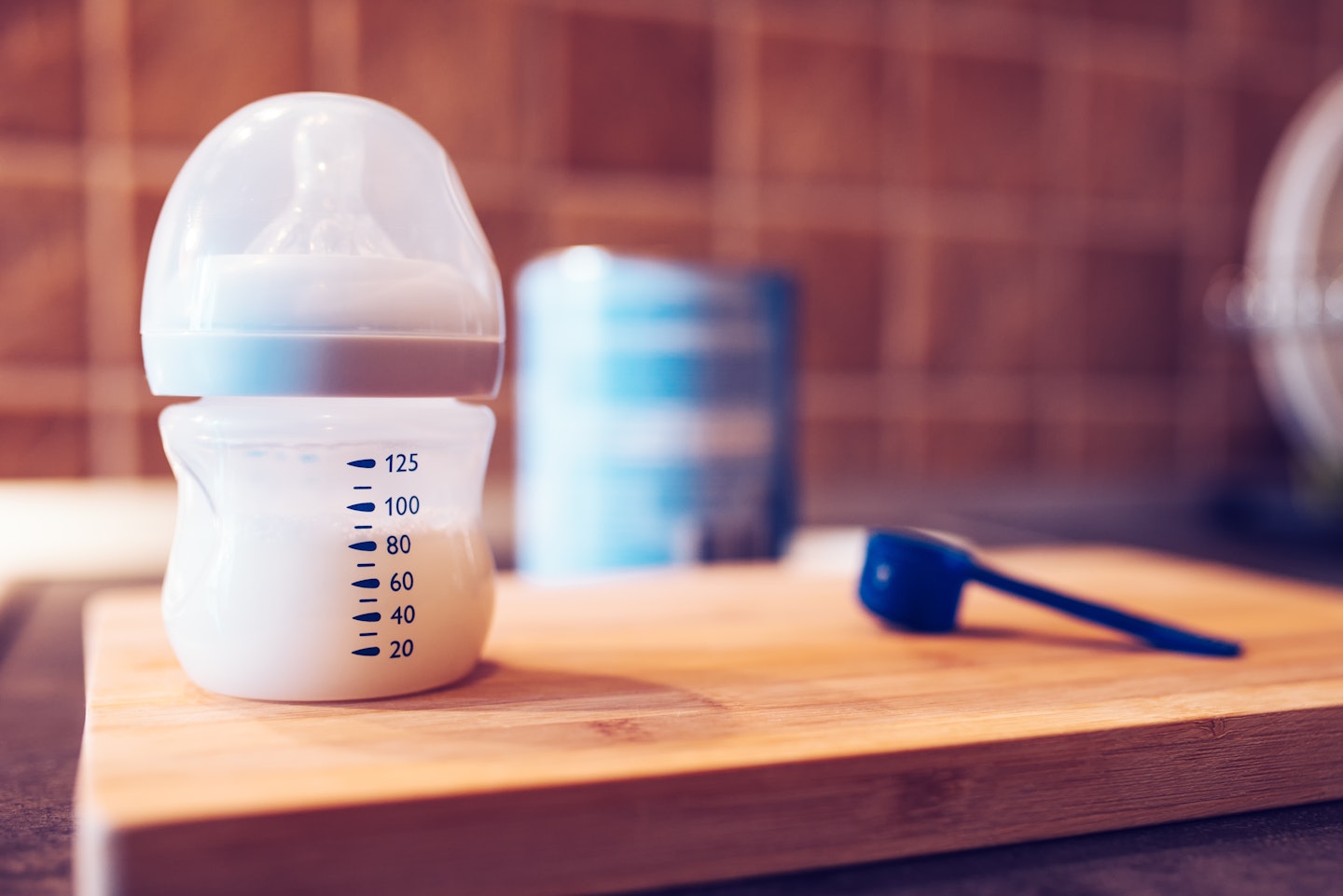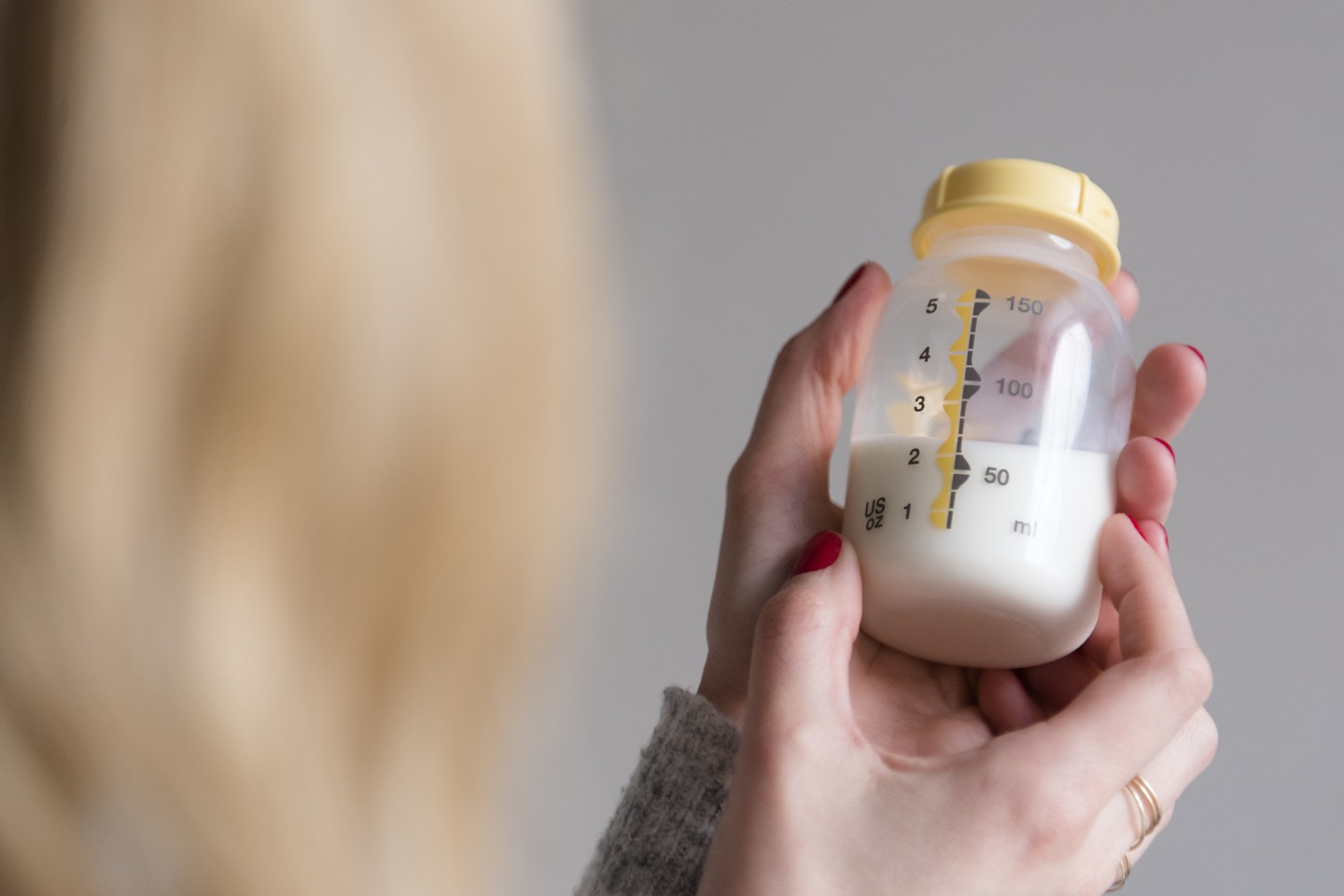While it's not always easy or practical to create a totally germ-free environment for your baby, you do need to sterilise your baby’s feeding equipment to ensure he stays healthy.
If you’re bottle-feeding your baby – either with formula or expressed milk – it’s important you sterilise the bottle you use properly.
‘Your baby’s immune system is not as developed as older children’s, which means you need to sterilise anything that comes into contact with a baby’s mouth to remove bacteria that could make him ill,’ says Millie Quickenden from Philips Avent.
That’s why it’s important to follow some key steps to ensure your baby’s bottle equipment is clean, sterile and safe to use.
Wash everything in warm soapy water

‘This is to make sure you clean any dried on milk from the bottles,’ says Millie.
‘I’d recommend using a special bottle brush to make sure you get into all the hard-to-reach areas.’
Many bottles are ‘dishwasher safe’ but putting them through the dishwasher won’t necessarily remove all the dried on milk so it’s often easier to do it by hand.
There are three main ways to sterilise bottles – electric steam, microwave steam or cold water chemical cleaning.

Using an electric steam steriliser
This uses no chemicals and only the heat of steam to kill bacteria. ‘They’re usually quick and efficient, with bottles ready in a few minutes,’ says Millie.
Simply add water and set it off. ‘As electric sterilisers contain metal heating elements, you may need to descale it every couple of weeks,’ says Millie.
The bottles will remain sterile within the machine for up to 24 hours or until it’s opened.
Using a microwave steam steriliser
‘This is usually a plastic container (metal-free) that you put water into and then steam sterilise in the microwave for a few minutes,’ says Millie.
It’s usually quick and the bottles can be left in there until you’re ready to use them.
Using chemical sterilising solution
To sterilise your baby’s bottle-feeding equipment with cold water, use a sterilising solution – usually in tablet form – dissolved in cold water.
This should kill bacteria on bottles so long as they’re kept submerged with no bubbles caught in them for at least 30 minutes.
You’ll need to change the solution every 24 hours. And remember to check the instructions to make sure the solution is not too concentrated or dilute.
Handle sterile bottles carefully

Once you’re ready to use a bottle, first wash your hands using an antibacterial handwash.
‘Remove the bottle from the steriliser using sterilised tongs (many are often included with sterilisers) and fill with milk,’ says Millie.
‘Then remove the teat, making sure it doesn’t touch anything else – if you drop it on the side, you’ll need another teat as that’s the most important item that needs to stay clean.’
Remember – don’t leave sterilised bottles out on the side for too long, as they will soon lose their sterility.
How long should I sterilise bottles for?
‘You should sterilise bottles for at least six months, but I’d recommend you do it until your baby is 12 months,’ says Millie.
This goes for all feeding equipment that you use for your baby. ‘If you start weaning your baby before six months, you should also sterilise any baby spoons or bowls,’ adds Millie.
Meet the expert: Millie Quickenden from Philips Avent.
Now read:
Breastfed or bottle-fed, IQ remains the same, says new research

